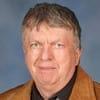Explore all the information on
Poultry management
Poultry management usually refers to the husbandry practices or production techniques that help to maximize the efficiency of production. Sound management practices are very essential to optimize production. Scientific poultry management aims at maximizing returns with minimum investment. A carefully controlled environment that avoids crowding, chilling, overheating, or frightening is almost universal in poultry farming. Cannibalism, which expresses itself as toe picking, feather picking, and tail picking, is controlled by debeaking at one day of age and by other management practices. The feeding, watering, egg gathering, and cleaning operations are highly mechanized. Birds are usually housed in wire cages with two or three animals per cage, depending on the species and breed, and three or four tiers of cages superposed to save space. Cages for egg-laying birds have been found to increase production, lower mortality, reduce cannibalism, lower feeding requirements, reduce diseases and parasites, improve culling, and reduce both space and labour requirements.
Water meters are used as a management tool to track daily water usage in poultry houses. Most mechanical water meters used in poultry housing can only measure water flow rates more than 0.25 gals/min which limits reliable measurement of water usage for birds that are less than four days of age. Producers can now accurately measure water usage within minutes of chicks being placed in the house by using ultrasonic water meters. Modern house controllers can collect, store, and graph water...
Comments : 3
Recommendations: 1
Poultry scientists show that a few hours of darkness a day does not harm broiler chicks
Broiler chicks can be provided between 1 to 4 hours of darkness a day without negative consequences, according to a recent study led by scientists at the USDA Agricultural Research Service and Auburn University.
Their findings, published in The Journal of Applied Poultry Research, address the practice of rearing chicks with constant light during their...
Comments : 0
Recommendations: 1
When placing chicks it is crucial to their future performance and health to make sure the litter they are placed upon has been thoroughly warmed. Though the air in a house can be heated relatively quickly, insuring the litter throughout a brooding area is heated to between 85°F and 95°F can take from 12 and 36 hours depending on the type of heating system, level of air movement, house tightness, litter moisture level, etc. Since the chicks are in constant contact with the litter,...
Comments : 0
Recommendations: 0
Mike Czarick (University of Georgia) explains how this application can help you assess how much you need to ventilate your poultry house, in this interview during IPPE 2023 in Atlanta, USA....
Comments : 0
Recommendations: 1
Historic existence of Indian Poultry Industry from the last 50 years not only have created many milestones but also evolved as major rural employment generator producing the ultimate protein. Poultry meat production increased from 3.725 million tons in 2014 to 8.80...
Comments : 1
Recommendations: 3
Tom Tabler (The University of Tennessee) explains why neglecting pH or the presence of bacteria in the water can prove costly, in this interview during IPPE 2023 in Atlanta, USA....
Comments : 0
Recommendations: 0


Speculation over the Provisional Ruling on Anti-dumping Duties of Lysine by the EU Against China
Suggested link
Garret Ashabranner (University of Georgia) explains the different issues that can be identified by using water meters, in this interview during IPPE 2023 in Atlanta, USA....
Comments : 0
Recommendations: 1
APRIL 4 @ 8:00 AM - APRIL 6 @ 11:00 AM EDT
$450.00 – $550.00
This intensive training program has been specifically designed for those who want to learn more about poultry house environmental management during hot weather. The workshop consists of lectures...
Comments : 1
Recommendations: 1
Dr. Frank CHMITELIN, Vice President Strategy & Sustainability, speaks about Adisseo’s pillars related to achieving sustainability and safety in animal production. ...
Comments : 3
Recommendations: 1
Daily water consumption has been used as a management tool by poultry producers for decades. Since water consumption is closely correlated to feed consumption, decreases in daily water consumption are often an indicator of reduced feed consumption and/or health issue. With the emergence of ultrasonic water meters bird water usage can now be more accurately monitored on a minute-to-minute basis thus providing the opportunity to view bird drinking/feeding activity over the course of the day...
Comments : 0
Recommendations: 0
When it comes to controlling both the environment within a poultry house and heating costs during cold weather, house tightness is of utmost importance. This is because only the air that exhaust fans draw in through a house’s air inlet system will be heated and dried by the warm air collecting near the ceiling before...
Comments : 0
Recommendations: 2
Shawna Weimer (University of Arkansas and Poultry Extension Collaborative) talks about the transition to cage-free production and consumer preferences, as well as enrichments and stunning, in this interview during IPPE 2023 in Atlanta, USA....
Comments : 0
Recommendations: 0
Andy Vance, Executive Director of the Poultry Science Association, talks about his new role, recent challenges in the industry, and PSA goals for 2023, in this interview during IPPE 2023 in Atlanta, USA....
Comments : 0
Recommendations: 2
Will Strickland (University of Georgia) comments on his research on water consumption and potential issues that can be prevented by monitoring it, in this interview during IPPE 2023 in Atlanta, USA....
Comments : 0
Recommendations: 0
Elizabeth Santin (I See Inside Institute) explains how this method works as an efficient sanitary management tool to predict health results in broiler production....
Comments : 0
Recommendations: 3
Steve Lerner (CHR. Hansen) explains the effects of probiotics on the well-being of birds, and also comments on welfare and sustainability, in this interview during IPPE 2023 in Atlanta, USA....
Comments : 0
Recommendations: 5
Vijay Durairaj (Huvepharma) explains the severity of this disease, and comments on diagnosis and prevention best practices, in this interview during IPPE 2023 in Atlanta, USA....
Comments : 0
Recommendations: 1
On-farm euthanasia is not a pleasant topic, but when raising poultry, there are often circumstances that require birds to be euthanized, such as illness, injury and disease, because it is not always possible or feasible to treat affected birds. Euthanasia refers to “good death” and is distinct from other terms such...
Comments : 0
Recommendations: 0
As discussed in our previous newsletter, circumstances arise that require poultry to be humanely euthanized. This newsletter provides a brief overview on-farm methods for the euthanasia of small numbers of poultry. Most of these methods are different from methods used at processing and methods used for culling or depopulation during disease...
Comments : 0
Recommendations: 0


.jpg&w=3840&q=75)










.jpg&w=3840&q=75)

.jpg&w=3840&q=75)



.jpg&w=3840&q=75)
.jpg&w=3840&q=75)
.jpg&w=3840&q=75)





.jpg&w=3840&q=75)











